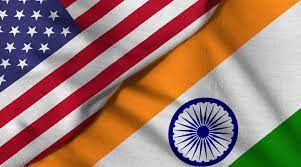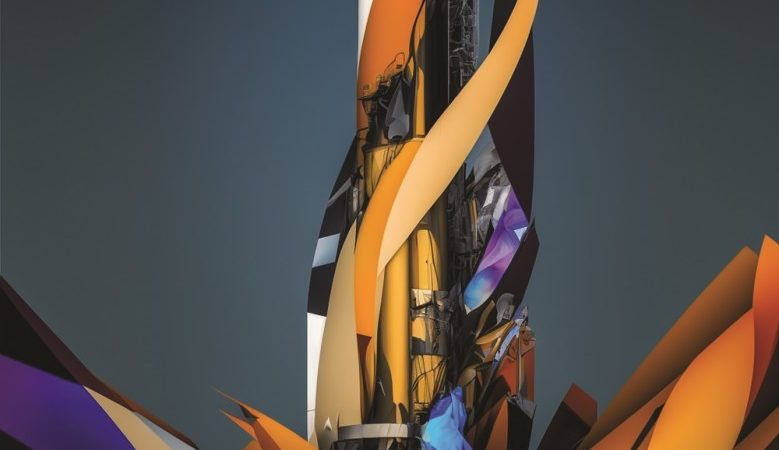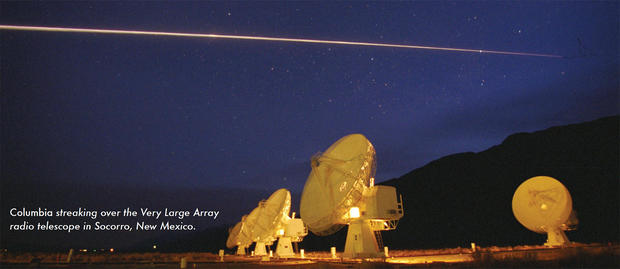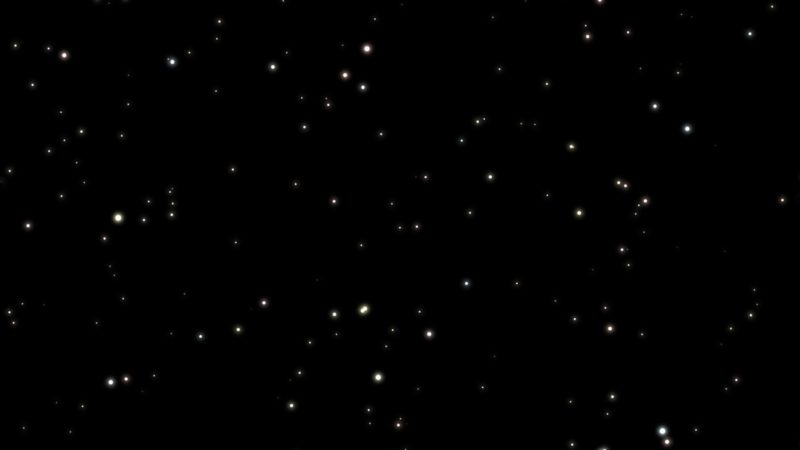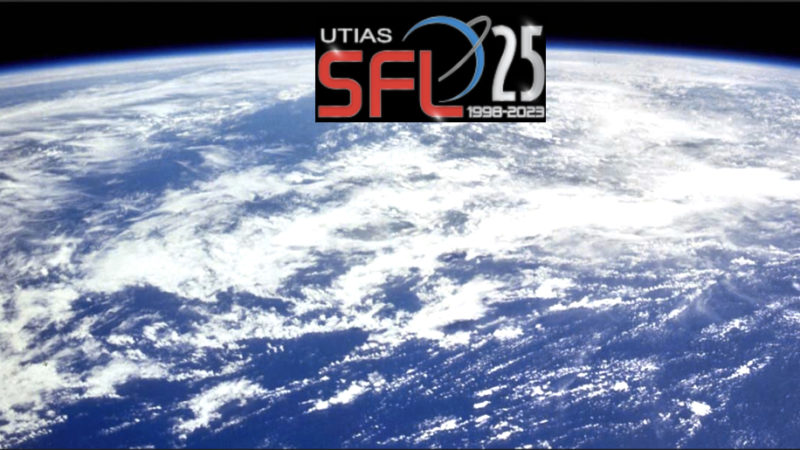NASA Spaceline Current Awareness List #880 3 January 2020 (Space Life Science Research Results) – Space Ref
Status Report From: Spaceline
Posted: Friday, January 3, 2020
SPACELINE Current Awareness Lists are distributed via listserv and are available on the NASA Task Book website at https://taskbook.nasaprs.com/ Publication/spaceline.cfm. Please send any correspondence to Robyn Ertwine, SPACELINE Current Awareness Senior Editor, SPACELINE@nasaprs.com.
Papers deriving from NASA support:
1
Norsk P.
Adaptation of the cardiovascular system to weightlessness: Surprises, paradoxes and implications for deep space missions.
Acta Physiol (Oxf). 2019 Dec 24. [Epub ahead of print] Review.
https://www.ncbi.nlm.nih.gov/ pubmed/31872965
Note: Results from Skylab, Space Shuttle, and ISS missions are discussed.
Journal Impact Factor: 5.868
Funding: “This paper was supported from the NNX16AO69A, NASA Cooperative Agreement to Baylor College of Medicine for the Translational Research Institute for Space Health (TRISH).”
2
Laurie SS, Lee SMC, Macias BR, Patel N, Stern C, Young M, Stenger MB.
Optic disc edema and choroidal engorgement in astronauts during spaceflight and individuals exposed to bed rest.
JAMA Ophthalmol. 2019 Dec 26. [Epub ahead of print]
https://www.ncbi.nlm.nih.gov/ pubmed/31876939
PIs: S.S. Laurie, M.B. Stenger, B.R. Macias
Note: ISS results and bed rest study. See #5 in Other section of this List for Commentary.
Journal Impact Factor: 6.167
Funding: “This work was supported by grants NNJ11ZSA002NA and NNJ14ZSA001N from the NASA Human Research Program’s Human Health Countermeasures Element, NASA Human Research Program directed research; and grant NNJ12ZSA002N from The National Space Biomedical Research Institute.”
3
English KL, Bloomberg JJ, Mulavara AP, Ploutz-Snyder LL.
Exercise countermeasures to neuromuscular deconditioning in spaceflight.
Compr Physiol. 2019 Dec 18;10(1):171-96.
https://www.ncbi.nlm.nih.gov/ pubmed/31853963
Note: Results from Mercury, Gemini, Apollo, Skylab, Space Shuttle, Mir, and ISS missions are discussed.
Journal Impact Factor: 6.246
Funding: No funding cited. J.J. Bloomberg and A.P. Mulavara are affiliated with NASA Johnson Space Center.
4
Nakashima A, Limardo J, Boone A, Danielson RW.
Influence of impulse noise on noise dosimetry measurements on the International Space Station.
Int J Audiol. 2019 Dec 17. [Epub ahead of print]
https://www.ncbi.nlm.nih.gov/ pubmed/31846378
Note: ISS results.
Journal Impact Factor: 1.821
Funding: No funding cited. J. Limardo and A. Boone are affiliated with NASA Johnson Space Center.
5
Pawelczyk JA.
We choose to go the Moon … again … and here’s what it means for physiology.
Exp Physiol. 2019 Dec 19. [Epub ahead of print]
https://www.ncbi.nlm.nih.gov/ pubmed/31856362
Note: Opportunities for physiological research in the Artemis Program are discussed. This article may be obtained online without charge.
Journal Impact Factor: 2.624
Funding: No funding cited. The author is a former NASA astronaut.
6
Mortreux M, Riveros D, Semple C, Bouxsein ML, Rutkove SB.
The partial weight-bearing rat model using a pelvic harness does not impact stress or hindlimb blood flow.
Acta Astronaut. 2020 Mar 1;168:249-55. Epub 2019 Dec 24.
http://www.sciencedirect.com/ science/article/pii/ S0094576519314572
PI: S.B. Rutkove
Note: A harness was used for weight bearing loads.
Journal Impact Factor: 2.482
Funding: “This work was funded by the National Aeronautics and Space Administration (NASA: NNX16AL36G).”
7
Mias GI, Zheng M.
The MathIOmica Toolbox: General analysis utilities for dynamic omics datasets.
Curr Protoc Bioinformatics. 2020 Mar;69(1):e91. Epub 2019 Dec 19.
https://www.ncbi.nlm.nih.gov/ pubmed/31851777
PI: G.I. Mias
Journal Impact Factor: 9.63
Funding: “G.I.M., M.Z. and research reported in this publication has been funded by the Translational Institute for Space Health, under NASA cooperative agreement NNX16AO69A (Project T0412).”
8
Bulin SE, Simmons SJ, Richardson DR, Latchney SE, Deutsch HM, Yun S, Eisch AJ.
Indices of dentate gyrus neurogenesis are unaffected immediately after or following withdrawal from morphine self-administration compared to saline self-administering control male rats.
Behav Brain Res. 2020 Mar 2;381:112448. Epub 2019 Dec 20.
https://www.ncbi.nlm.nih.gov/ pubmed/31870778
PI: A.J. Eisch
Journal Impact Factor: 2.77
Funding: “This work was supported by the National Institutes of Health (National Institute on Drug Abuse, AJE grants DA007290, DA016765, DA023555, T32-DA07290; National Institute of Mental Health, AJE grants MH107945, T32-MH076690, PI: CA Tamminga, Trainee: SY; National Institute of Neurological Disorders and Stroke, T32-NS007413, PI: MB Robinson; Trainee: SJS), the National Aeronautics and Space Administration (AJE grants NNX12AB55G, NNX15AE09G, 80NSSC17K0060), a PENN McCabe Pilot grant (to SY), and the Brain & Behavior Research Foundation (2019 NARSAD Young Investigator Award to SY).”
9
Limoli CL, Britten R, Baulch J, Borak T.
Response to the Commentary from Bevelacqua et al.
eNeuro. 2019 Dec 17. [Epub ahead of print]
https://www.ncbi.nlm.nih.gov/ pubmed/31857345
PIs: C.L. Limoli/M.M. Acharya/J.E. Baulch/R.A. Britten/I. Soltesz/NSCOR; M. Weil/T.B. Borak/NSCOR
Note: The authors respond to #12 in the Other section of this List: Bevelacqua JJ, Welsh J, Mortazavi S. Comments on “New concerns for neurocognitive function during deep space exposures to chronic, low dose rate, neutron radiation.” eNeuro. 2019 Dec 17. [Epub ahead of print] https://www.ncbi.nlm.nih.gov/ pubmed/31857344. The articles may be obtained online without charge.
Journal Impact Factor: Not available for this journal
Funding: From the original article: “This work was supported by UCI Institute for Clinical and Translational Sciences (ICTS) KL2 training award KL2TR001416 (MMA), NASA Specialized Center of Research (NSCOR) grant NNX15AK13G for funding the neutron irradiator and NASA Specialized Center of Research (NSCOR) grant NNX15AI22G (RAB, IS, CLL).”
10
Maier I, Liu J, Ruegger PM, Deutschmann J, Patsch JM, Helbich TH, Borneman J, Schiestl RH.
Intestinal bacterial indicator phylotypes associate with impaired DNA double-stranded break sensors but augmented skeletal bone micro-structure.
Carcinogenesis. 2019 Dec 16. [Epub ahead of print]
https://www.ncbi.nlm.nih.gov/ pubmed/31840161
PI: R.H. Schiestl
Journal Impact Factor: 4.004
Funding: “This work was supported by NASA Grant NNX11AB44G (R.H. Schiestl, J. Borneman) and Fulbright Grant for Teaching and Research (I. Maier).”
11
Carter NT, Lowery MR, Williamson Smith R, Conley KM, Harris AM, Listyg B, Maupin CK, King RT, Carter DR.
Understanding job satisfaction in the causal attitude network (CAN) model.
J Appl Psychol. 2019 Dec 19. [Epub ahead of print]
https://www.ncbi.nlm.nih.gov/ pubmed/31855030
PI: D.R. Carter
Journal Impact Factor: 5.067
Funding: “The work of Nathan T. Carter was supported, in part, by funding from the National Science Foundation (NSF SES1561070); the work of Alexandra M. Harris was supported, in part, by funding by the NSF Graduate Research Fellowship Program (DGE-1443117); and the work of Dorothy R. Carter was supported, in part, by funding from the NSF (SES, 1853470), the National Institutes of Health (NIH, UL1TR002378), and the National Aeronautics and Space Administration (NASA, 80NSSC18K0511).”
12
Rahman SA, Wright KP Jr, Lockley SW, Czeisler CA, Gronfier C.
Characterizing the temporal dynamics of melatonin and cortisol changes in response to nocturnal light exposure.
Sci Rep. 2019 Dec 23;9(1):19720.
https://www.ncbi.nlm.nih.gov/ pubmed/31873098
PIs: S.W. Lockley, C.A. Czeisler
Note: This article may be obtained online without charge.
Journal Impact Factor: 4.011
Funding: “This work was supported by NAG 5-3952 from the National Aeronautics and Space Agency, and by General Clinical Research Center grant GCRC-M01- RR02635 from the National Center for Research Resources. SAR, SWL and CAC were supported in part by the National Space Biomedical Research Institute through NASA NCC 9-58. SAR was supported by NIH/NHLBI T32-HL007901. KPW was supported in part by NIH/NHLBI HL109706. CG was supported in part by ANR 12-TECS-0013-01, and by EU ENG62-REG3-APP035.”
13
Auñón-Chancellor S.
Earthling.
Ann Intern Med. 2019 Dec 17;171(12):937-8.
https://www.ncbi.nlm.nih.gov/ pubmed/31842213
Note: Dr. Auñón-Chancellor writes about her experiences during her time on the International Space Station.
Journal Impact Factor: 19.315
Funding: No funding cited. Dr. Auñón-Chancellor is a NASA physician astronaut.
14
McMackin PM, Griffin SR, Riley FP, Gulati S, Debono NE, Raghunandan A, Lopez JM, Hirsa AH.
Simulated microgravity in the ring-sheared drop.
npj Microgravity. 2020 Jan 3;6(1):2.
https://www.nature.com/ articles/s41526-019-0092-1
PI: A.H. Hirsa
Note: Ring-sheared drop was used. This article may be obtained online without charge.
Journal Impact Factor: 3.111
Funding: “This work was supported by NASA grant NNX13AQ22G and NSF grants 1929134 and 1929139.”
______________________________ _________________________
Other papers of interest:
1
Horie K, Kato T, Kudo T, Sasanuma H, Miyauchi M, Akiyama N, Miyao T, Seki T, Ishikawa T, Takakura Y, Shirakawa M, Shiba D, Hamada M, Jeon H, Yoshida N, Inoue JI, Muratani M, Takahashi S, Ohno H, Akiyama T.
Impact of spaceflight on the murine thymus and mitigation by exposure to artificial gravity during spaceflight.
Sci Rep. 2019 Dec 27;9(1):19866.
https://www.ncbi.nlm.nih.gov/ pubmed/31882694
Note: ISS results; centrifugation was used for artificial gravity. This article may be obtained online without charge.
2
Qaisar R, Karim A, Elmoselhi A.
Muscle unloading: A comparison between spaceflight and ground-based models.
Acta Physiol (Oxf). 2019 Dec 15. [Epub ahead of print] Review.
https://www.ncbi.nlm.nih.gov/ pubmed/31840423
Note: Spaceflight, bed rest, and hindlimb unloading studies are reviewed.
3
Mileti I, Taborri J, Rossi S, Del Prete Z, Paoloni M, Suppa A, Palermo E.
Reactive postural responses to continuous yaw perturbations in healthy humans: The effect of aging.
Sensors (Basel). 2019 Dec 20;20(1):E63.
https://www.ncbi.nlm.nih.gov/ pubmed/31861945
Note: This article may be obtained online without charge.
4
Sheet S, Yesupatham S, Ghosh K, Choi MS, Shim KS, Lee YS.
Modulatory effect of low-shear modeled microgravity on stress resistance, membrane lipid composition, virulence, and relevant gene expression in the food-borne pathogen Listeria monocytogenes.
Enzyme Microb Technol. 2020 Feb;133:109440.
https://www.ncbi.nlm.nih.gov/ pubmed/31874690
Note: A Rotary Cell Culture System with high-aspect ratio vessel was used.
5
Shinojima A.
Possible factors associated with spaceflight-associated neuro-ocular syndrome.
JAMA Ophthalmol. 2019 Dec 26. [Epub ahead of print]
https://www.ncbi.nlm.nih.gov/ pubmed/31876941
Note: This is a Comment on NASA #2: Laurie SS, Lee SMC, Macias BR, Patel N, Stern C, Young M, Stenger MB. Optic disc edema and choroidal engorgement in astronauts during spaceflight and individuals exposed to bed rest. JAMA Ophthalmol. 2019 Dec 26. [Epub ahead of print] https://www.ncbi.nlm.nih.gov/ pubmed/31876939.
6
Altarawneh MM, Hanson ED, Betik AC, Petersen AC, Hayes A, McKenna MJ.
Effects of testosterone suppression, hind limb immobilization and recovery on [3H]ouabain binding site content and Na+, K+-ATPase isoforms in rat soleus muscle.
J Appl Physiol (1985). 2019 Dec 19. [Epub ahead of print]
https://www.ncbi.nlm.nih.gov/ pubmed/31854248
Note: Immobilization was accomplished via casting.
7
Deyhle MR, Carlisle M, Sorensen JR, Hafen PS, Jesperson K, Ahmadi M, Hancock CR, Hyldahl RD.
Accumulation of skeletal muscle T-cells and the repeated bout effect in rats.
Med Sci Sports Exerc. 2019 Dec 23. [Epub ahead of print]
https://www.ncbi.nlm.nih.gov/ pubmed/31876672
8
Albiol L, Büttner A, Pflanz D, Mikolajewicz N, Birkhold AI, Kramer I, Kneissel M, Duda GN, Checa S, Willie BM.
Effects of long-term sclerostin deficiency on trabecular bone mass and adaption to limb loading differ in male and female mice.
Calcif Tissue Int. 2019 Dec 23. [Epub ahead of print]
https://www.ncbi.nlm.nih.gov/ pubmed/31873756
9
Yu W, Wu X, Cen H, Guo Y, Li C, Wang Y, Qin Y, Chen W.
Study on the biomechanical responses of the loaded bone in macroscale and mesoscale by multiscale poroelastic FE analysis.
Biomed Eng Online. 2019 Dec 23;18(1):122.
https://www.ncbi.nlm.nih.gov/ pubmed/31870380
Note: This article may be obtained online without charge.
10
Averbeck D, Candéias S, Chandna S, Foray N, Friedl A, Haghdoost S, Jeggo PA, Lumniczky K, Paris F, Quintens R, Sabatier L.
Establishing mechanisms affecting the individual response to ionising radiation.
Int J Radiat Biol. 2019 Dec 18. [Epub ahead of print] Review.
https://www.ncbi.nlm.nih.gov/ pubmed/31852363
11
Berger T, Marsalek K, Aeckerlein J, Hauslage J, Matthiä D, Przybyla B, Rohde M, Wirtz M.
The German Aerospace Center M-42 radiation detector—A new development for applications in mixed radiation fields.
Rev Sci Instrum. 2019 Dec 1;90(12):125115.
https://www.ncbi.nlm.nih.gov/ pubmed/31893784
12
Bevelacqua JJ, Welsh J, Mortazavi S.
Comments on “New concerns for neurocognitive function during deep space exposures to chronic, low dose rate, neutron radiation.”
eNeuro. 2019 Dec 17. [Epub ahead of print]
https://www.ncbi.nlm.nih.gov/ pubmed/31857344
Note: The authors comment on: Acharya MM, Baulch JE, Klein PM, Baddour AAD, Apodaca LA, Kramár EA, Alikhani L, Garcia C Jr, Angulo MC, Batra RS, Fallgren CM, Borak TB, Stark CEL, Wood MA, Britten RA, Soltesz I, Limoli CL. New concerns for neurocognitive function during deep space exposures to chronic, low dose-rate, neutron radiation. eNeuro. 2019 Aug 22;6(4). https://www.ncbi.nlm.nih.gov/ pubmed/31383727. The original article was cited in SPACELINE Current Awareness List #860, 9 Aug 2019. The articles may be obtained online without charge.
13
Fu J, Zhu L, Tu W, Wang X, Pan Y, Bai Y, Dang B, Chen J, Shao C.
Macrophage-mediated bystander effects after different irradiations through a p53-dependent pathway.
Radiat Res. 2019 Dec 16. [Epub ahead of print]
https://www.ncbi.nlm.nih.gov/ pubmed/31841081
14
Ghandhi SA, Smilenov L, Shuryak I, Pujol-Canadell M, Amundson SA.
Discordant gene responses to radiation in humans and mice and the role of hematopoietically humanized mice in the search for radiation biomarkers.
Sci Rep. 2019 Dec 19;9(1):19434.
https://www.ncbi.nlm.nih.gov/ pubmed/31857640
Note: This article may be obtained online without charge.
15
Kamsali N, Chakravarty SC, Basuvaraj PK.
Investigation of HZE particle fluxes as a space radiation hazard for future Mars missions.
Heliyon. 2019 Dec 5;5(12):e02972.
https://www.ncbi.nlm.nih.gov/ pubmed/31867459
Note: This article may be obtained online without charge.
16
Nabavizadeh N, Qi Y, Kaempf A, Chen Y, Tanyi JA, Lindner JR, Wu MD.
Contrast-enhanced ultrasound to detect early microvascular changes in skeletal muscle after high-dose radiation treatment.
Radiat Res. 2019 Dec 16. [Epub ahead of print]
https://www.ncbi.nlm.nih.gov/ pubmed/31841082
17
Tang S, Li Z, Yang L, Shen L, Wang Y.
A potential new role of ATM Inhibitor in radiotherapy: Suppressing ionizing radiation-activated EGFR.
Int J Radiat Biol. 2019 Dec 20. [Epub ahead of print]
https://www.ncbi.nlm.nih.gov/ pubmed/31859 574
18
Xia P, Liu L, Hu X, Yu D, Dong S, Du J, Xu Y, Liu B, Yang Y, Gao F, Cai J, Liu H.
KATP channel blocker glibenclamide prevents radiation-induced lung injury and inhibits radiation-induced apoptosis of vascular endothelial cells by increased Ca2+ influx and subsequent PKC activation.
Radiat Res. 2019 Dec 26. [Epub ahead of print]
https://www.ncbi.nlm.nih.gov/ pubmed/31877256
19
Angelaki DE, Laurens J.
The head direction cell network: Attractor dynamics, integration within the navigation system, and three-dimensional properties.
Curr Opin Neurobiol. 2019 Dec 23;60:136-44. Review.
https://www.ncbi.nlm.nih.gov/ pubmed/31877492
20
Tani K, Ishimaru S, Yamamoto S, Kodaka Y, Kushiro K.
Effect of dynamic visual motion on perception of postural vertical through the modulation of prior knowledge of gravity.
Neurosci Lett. 2020 Jan 18;716:134687.
https://www.ncbi.nlm.nih.gov/ pubmed/31838018
Note: A tilt chair and acceleration were used.
21
Szocik K.
Is human enhancement in space a moral duty? Missions to Mars, advanced AI and genome editing in space.
Camb Q Healthc Ethics. 2020 Jan;29(1):122-30.
https://www.ncbi.nlm.nih.gov/ pubmed/31858939
Note: From the abstract: “This paper discusses the challenges for long-term human missions of a space environment, opening the possibility of serious consideration of human enhancement and a fully automated space exploration, based on highly advanced AI. The author argues that for such projects, there are strong reasons to consider human enhancement, including gene editing of germ line and somatic cells, as a moral duty.”
// end //
More status reports and news releases or top stories.
Please follow SpaceRef on Twitter and Like us on Facebook.
Please enable JavaScript to view the comments powered by Disqus.


